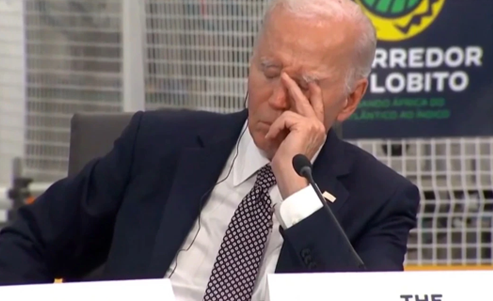According to global business publication Forbes Magazine, “Today’s organisational leaders are facing accelerating rates of volatility, uncertainty, complexity, and ambiguity, all of which are showing no signs of slowing down. Whether it is the continuing digital revolution or expanding global markets, our current environment requires a constant state of innovation”. Business leaders in the Australian economy have been forced to endure the Albanase economic train wreck for long enough. The only thing this federal government seem capable of doing is destroying our economy and adding complexity to the daily lives of business owners.
Until the time that a Dutton-led Liberal government are returned to power in Canberra, this is highly relevant for Australian small business owners, given the ongoing challenges being faced to not only survive but also sustain ongoing business performance against local and international competition across all domestic industry segments. Given the turbulent economic times which we continue to face in Australia thanks to the ALP’s half billion taxpayer funded distraction of the Voice Referendum, the question must be asked as to what small business owners can do to differentiate themselves for sustainable business success against their competitors who are also operating for market share and an evolving / ever changing customer base. It’s time to take matters into their own hands as much as possible.
With barriers to entry into established market segments being rapidly diminished as a result of innovative technologies, new market entrants and social media platforms, the one remaining ‘success factor’ for small business owners to differentiate themselves is leadership. You may be asking yourself how leadership actually matters if you are one of the many long-suffering Australians in the mortgage belt, operating a small business with a limited number of employees. Not only does it matter, but it can be the sole distinguishing factor which drives your small business to future financial success. Leadership in this context refers to your ability to motivate, engage, develop, and positively drive your staff to go ‘beyond the call of duty’ to achieve great things as key assets of your small business.
In the larger organisational context, this is commonly referred to as ‘employee engagement’. In other words, the degree of extended discretionary effort that staff will exhibit for their employer to help them achieve ongoing success. The major components of ‘employee engagement’ relate to staff actively connecting with the business they work for, both mentally and emotionally. When staff approach their work in this way, HR research suggests that they outperform their colleagues and typically stay with that business for extended periods of time.
We can all think of personal examples outside of work where we are both mentally and emotionally connected to something. In these circumstances, we are significantly more likely to go the extra mile to provide a stronger contribution to that focus area. This may be for a sporting club or team, a political, religious, or social movement, family members, friends or something else.
It’s when business conditions are at their toughest that many business owners face the ultimate leadership challenge. Do they simply revert to a previous leadership approach which may have worked for them in years gone by? Or do they take a new, stronger, and more collaborative approach to their leadership and actively engage their staff to achieve great things in their business? As the Australian small business demographic continues to diversify from a cultural, age, gender and values perspective, there is a common expectation by staff members to be managed by small business leaders who possess a professional, collaborative, considerate and respectful style of leadership communication.
Gone are the days where a leader pointing the finger, ranting, and raving at staff members is an effective leadership approach. There is a reason why the Gordon Gecko character was created in the 1980’s for the movie ‘Wall Street’, and not in 2024. Times have changed and small business leaders need to adapt their leadership style to move with the times and truly engage their staff to feel deeply connected with their small business.
Of course, leadership can’t be focused on in isolation from other Human Resources (HR) necessities within a small business. For example, it’s crucial for a small business to have staff employed who not only have the technical capabilities to do their jobs effectively, but the potential to grow and develop into larger roles with more responsibility and accountability in the future should the business expand and / or change direction.
You may be feeling a little daunted by the leadership challenge in front of you, given the plethora of competing small business challenges you face on a daily basis, with very little time to rise above the daily stresses of rigorous business competition. If you do nothing else, ask yourself these simple leadership questions: “How do I want my staff to describe me as a leader when I am not there with them?” and “what leadership legacy do I want to leave with my current and future staff?” – once you’ve been able to answer these questions you will be able to size up the leadership challenge and opportunity in front of you to achieve great things in your small business and develop your leadership action plan to make it happen. Having a federal government that is so anti-business and wanting to put their left-wing fingers in every aspect of our lives, this challenge for you to be successful with your business is tougher than ever.
We all have a great leader inside us. I call it Albanese repellant. Let the lion roar from within. Create the workplace culture that you want to create, whatever it takes. Even if it’s just you. Find that leadership style and approach that works for you and your staff to achieve business success. Fear leads to stagnation. Stagnation leads to failure. Don’t give our Prime Minister the satisfaction.





